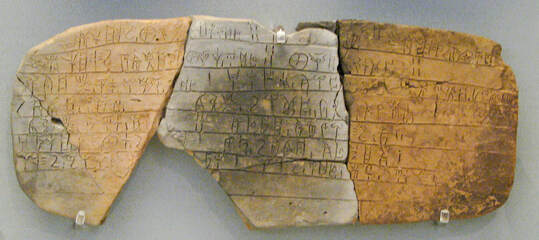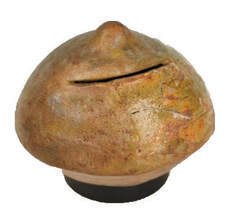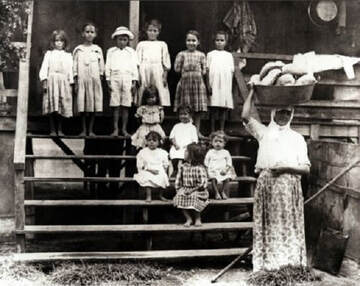David Tickner's Blog, page 24
February 13, 2022
Valentine
 The romantic association of Valentine's Day is said to be from it being around the time when birds choose their mates. Choosing a sweetheart on Valentine’s Day originated in the 14th century as a custom in English and French court circles.
The romantic association of Valentine's Day is said to be from it being around the time when birds choose their mates. Choosing a sweetheart on Valentine’s Day originated in the 14th century as a custom in English and French court circles.The word valentine, meaning a sweetheart chosen on St Valentine’s Day, first appears in English in the mid-15th century. A 1723 publication in London notes the following:
“To speak of the particular Customs of the English Britons, I shall begin with Valentine's Day, Feb. 14. when young Men and Maidens get their several Names writ down upon Scrolls of Paper rolled up, and lay 'em asunder, the Men drawing the Maidens Names, and these the Mens; upon which, the Men salute their chosen Valentines and present them with Gloves, &c. This Custom (which sometimes introduces a Match) is grounded upon the Instinct of Animals, which about this Time of the Year, feeling a new Heat by the approach of the Sun, begin to couple.”
These scrolls or pieces of paper, drawn from a pot, were meant to motivate or initiate a special relationship for the coming year. These pieces of paper came to be known as valentines.
A Valentine, meaning a letter or card sent to a sweetheart, is from 1824. The custom of sending such letters and cards flourished in England from around 1840 to around 1870. The custom then declined and revived again in the 1920s.
Two or three saints of the early Christian church in Italy were named Valentine or Valentinus, a word from Latin valentia meaning strength or capacity. Over the centuries, the general consensus has grown that the St Valentine recognized on Valentine’s Day was a third-century martyr from Umbria.
Other Valentine notes: During the 16th century, a sealed letter from the Crown to landholders demanding the arrest of lawbreakers was called a valentine. Also, during the preparations for World War II, a 16-ton heavy infantry tank was commissioned. It was called the Valentine. Why? Apparently, it was commissioned on 14 February 1938. How romantic is that?!
Reference: Online Etymological Dictionary, https://www.etymonline.com/
Crystal, D. (2013). The story of English in 100 words. New York: Picador, 76 – 78.
Published on February 13, 2022 11:05
February 10, 2022
Fret
 Do you ever wonder about the origins of the word fret? You don’t? Well, don’t fret about it. No one seems to know the origins of the word.
Do you ever wonder about the origins of the word fret? You don’t? Well, don’t fret about it. No one seems to know the origins of the word.What is a fret? A fret is a ridge on the fingerboard of a guitar or banjo. Guitars usually have from 18 to 24 frets. Acoustic guitars generally having fewer frets than an electric guitar. A banjo usually has 22 frets. Pressing the guitar or banjo strings onto different frets produces different musical sounds.
The word fret first appears in English around 1500, possibly from Old French frete (ring, ferrule). And that is about all that is known about the origins of the word fret.
Having said this, there are many examples of fretted stringed instruments from the ancient world. For example, the remains of a 3rd century CE lute were found in 1907 at an archeological site in Xinjiang, China. Paintings of lutes on the walls of tombs and caves from about 1,500 years ago have been found in other places in China. Images of lutes are to be found in European psalters and books of songs from the same period.
Having said all this, if you do feel the need to fret about something, the verb ‘to fret’ has nothing to do with guitars or banjos or any other musical instrument.
Do you feel a gnawing or tightness in your body when you have something troublesome or problematic on your mind or heart? Do you feel like something is eating away at you? If so, you are likely fretting.
The verb fret comes from Old English fretan (to devour, feed upon, consume) from Proto-Germanic fraetan (to eat up), words which describe the noisy rubbing, scraping, and gnawing sounds which animals, particularly wild animals, make while eating. In the early 15th century, the word fret came to English meaning a gnawing, the wearing or wearying effect of an awareness of wrongdoing, fear, or some other stress. By the 1550s, to fret meant to be worried, to vex oneself.
Reference: Online Etymological Dictionary, https://www.etymonline.com/
Published on February 10, 2022 08:03
February 7, 2022
Technology
 The word technology has its origins in the Proto-Indo-European (PIE) root teks (to weave; the origin of textile, among many other words).
1
The PIE word teks-na meant the craft of weaving or fabricating.
The word technology has its origins in the Proto-Indo-European (PIE) root teks (to weave; the origin of textile, among many other words).
1
The PIE word teks-na meant the craft of weaving or fabricating.The word technology comes from Greek tekhne (art, skill, craft in work; method, system, an art, a system or method of making or doing) and Greek logia, legein (to speak, to tell; the character or deportment of one who speaks of a certain subject). Greek tekhne + logia = tekhnologia (systematic treatment of an art, craft, or technique). Tekhnologia originally referred to the systematic treatment of grammar and rhetoric; i.e., the construction and use of language. 2
In the 1610s, the word technology came to English meaning a discourse or treatise on an art or the arts.
The word technological, in reference to terminology, is from the 1620s; meaning of or relating to technology is from around 1800. The word technologist, meaning one versed in technology, is from 1803.
Technology, meaning the study of mechanical and industrial arts; e.g., spinning, metalwork, and brewing, is from 1859.
The term ‘high technology’ is from 1964; high-tech is from 1972. Technie is from 1984.
What is the difference between technology and high technology? High technology is a relative term simply meaning the latest and greatest cutting edge technology. Low technology 3 refers to simple or traditional technology; for example, a slide rule or a vacuum tube. In brief, when high tech gets old it becomes low tech!
1 PIE teks also meant to make wicker or wattle fabric for mud-covered house walls. Other words from PIE teks include architect, context, polytechnic, pretext, technical, technician, text, and others.
PIE teks is related to many other ancient words; e.g., Sanskrit taksati (he fashions, constructs) and taksan (carpenter); Avestan tasa (ax, hatchet); Old Persian taxs (be active); Latin texere (to weave); Slavonic tesla (ax, hatchet); Old Irish tal (cooper’s ax); Old High German dahs (badger, builder), Latin texere (to weave), and Greek tekton (carpenter). Interestingly, the Latin word for carpenter, lignarius, is unrelated to PIE teks; instead, it comes from lignum meaning wood. The Latin word carpentarius means a wagon maker.)
2 Merriam-Webster Dictionary.
3 Low technology is an example of a retronym. The Oxford Dictionary defines a retronym as a new term created from an existing word in order to distinguish it from the meaning that has emerged through progress or technological development (e.g., cloth diaper is a retronym necessitated by the fact that diaper now more commonly refers to a disposable diaper).
Image: https://en.wikipedia.org/wiki/Linear_B
Writing on stone: Linear B, one of the earliest forms of an alphabet, from 1450 BCE. The script was used in Myceanaean Greek which preceded the classical Greek of the ancient world by several centuries.
Reference: Online Etymological Dictionary, https://www.etymonline.com/
Published on February 07, 2022 21:06
February 5, 2022
Piggy Bank
 Scottish pirlie pig / Historic Environment Scotland
Scottish pirlie pig / Historic Environment Scotlandhttps://www.historicenvironment.scot
What do piggy banks have to do with pigs?
To make a long story short, not much is known for certain about the origin of the term piggy bank. However, to make a short story long, there are a number of different theories or ‘folk etymologies’.
The earliest known pig-shaped money containers are from 12th century Java. The Javanese term celengan (likeness of a wild boar) is still used today to mean a savings or ‘piggy bank’.
The earliest pig-shaped money containers in Europe were from 13th century Germany where pigs were considered symbols of good fortune.
In the European Middle Ages, an orange-colored clay called pygg was used to make various household pots and containers, including bed warmers (check out the Eric Bogle song). 1 People kept their money (i.e., their coins) in such a pygg pot.
In mid-15th century Scottish and Northern English, the word pig meant an earthenware pot, pitcher, or jar. The 18th century Scottish term ‘pirlie pig’ was a small money box, usually circular and made of earthenware.
At some point, the pygg money pot began to be shaped as a pig; perhaps, simply because the word pygg rhymed with the word pig (a word from the early 14th century meaning a swine or hog regardless of age or sex). Or, because of traditional associations of pigs with good fortune.
The term ‘piggy bank’ (an item usually given to a child) is from the 1940s and is likely from the term ‘pig bank’ (a ceramic or tin souvenir from Mexico) first seen in 1903.
1 Clay bottles, made from pygg, were filled with hot water were used and are still used as bed-warmers in some parts of Britain. They are known as ‘pigs’ or ‘china pigs’. Eric Bogle has a great song called “Wee China Pig” about a bed-warmer.
https://www.youtube.com/watch?v=smjv468ZnfY&ab_channel=EricBogle-Topic
Pirlie pig Image: https://www.historicenvironment.scot/archives-and-research/archives-and-collections/properties-in-care-collections/object/pirlie-pig-15th-century-16th-century-late-medieval-melrose-abbey-749
Reference: Online Etymological Dictionary, https://www.etymonline.com/
https://en.wikipedia.org/wiki/Piggy_bank
Published on February 05, 2022 09:41
February 2, 2022
conservative
 What’s the difference between conservative and preservative? Between conservation and preservation? Between conserve and preserve? Is there a difference?
What’s the difference between conservative and preservative? Between conservation and preservation? Between conserve and preserve? Is there a difference?Have you noticed that the words conserve and preserve both mean fruit that has been turned into jam? The value of the fruit has been conserved and preserved.
The words conserve and conservative have origins in the Proto-Indo-European (PIE) root ser-(1) (to protect) and Latin conservare (to keep, preserve, keep intact, guard), from Latin com (with, together) + servare (to keep watch, to maintain). To conserve is to keep watch together.
The word conservative (tending to preserve or protect, preservative, having the power to keep whole or safe) came to English in the late 14th century. In the early 1800s, the word conservative generally meant disposed to retain and maintain what is established, opposed to innovation and change; or, negatively, opposed to progress.
The Online Etymological Dictionary states that “strictly speaking, conservatism is not a political system or an ideology. Instead, conservativism reasons that social institutions will always differ considerably from nation to nation, since any land’s politics must be the product of that country’s dominant religion, ancient customs, and historical experience.” Conservatives are not necessarily opposed to change or progress as long as it unfolds within such a context.
Perhaps this is analogous to a person wishing to maintain, sustain, and pass forward their family traditions from one generation to the next as the family itself changes and grows. Or, perhaps analogous to a Fish and Wildlife Conservation Officer who both maintains and manages the changes in the life of a continually growing forest.
Countries or families or forests do not exist in a vacuum. A cursory reading of any history text tells us that for one reason or another change is constant—political revolution, war, climate change, wildfires, human migration, pandemics, famine, earthquakes—the list goes on and on.
Questions arise: within such change, what does a conservative wish to preserve and maintain? Who decides? What values are the basis for such decisions? How conservatives agree on the values? Can there be agreement?
The words preserve and preservation may provide a clue. The words have the same origins in PIE ser-(1)(to protect) as conserve; however, the ‘pre’ means to protect something before hand—to proactive, so to speak. Preserve that fruit before it goes bad!
Dare I say that this may imply participating in a process of change rather than resisting it so that what is of value can, in fact, be preserved and carried forward.
Reference: Online Etymological Dictionary, https://www.etymonline.com/
Published on February 02, 2022 10:39
January 31, 2022
liberal
 Where does the word liberal come from? Why does the word seem to have such a bad reputation these days? To be clear, I’m speaking of the word, not the politics.
Where does the word liberal come from? Why does the word seem to have such a bad reputation these days? To be clear, I’m speaking of the word, not the politics.The word liberal has its origins in Proto-Indo-European (PIE) leudh-ero (belonging to the people) and leudh (people). Latin liber meant, among other things, free (e.g., liberated). Latin liberalis meant gracious, generous (e.g., a liberal helping of potatoes!), free, pertaining to or befitting a free person.
The word liberal, meaning generous, noble, free, came to English in the mid-14th century from Old French liberal (free, generous, willing, zealous). In the late 14th century, liberal meant selfless, magnanimous, admirable.
By the early 15th century, liberal also meant extravagant and unrestrained. In the 16th and 17th centuries, liberal was a term of reproach; i.e., a liberal was perceived as someone free from restraint in speech or action (i.e., those who would say, “I’m free to say or do whatever I want”).
In the 18th century Enlightenment period, the word liberal regained its more positive use in terms of rights and freedoms. This was the time of the American and French revolutions. At that time, the word liberal was used to mean (perhaps idealistically) free from prejudice, tolerant, not bigoted or narrow.
Also at that time, given the context of revolution and upheaval, the liberal sense of freedom came to mean a freedom constrained by reason and knowledge; i.e., within reason, people can make free and informed choices. The so-called ‘liberal arts’ in education are the foundation for such free and informed choices. The implication of free choice is that people also freely accept the consequences of their choices.
In brief, whenever liberal is seen as licentious and unrestrained or as wishy-washy mindless tolerance, it is likely because reason and reasonableness have been ignored.
As Dietrich Bonhoeffer said in his book Letters and papers from prison, a person who is undisturbed by facts or reason or even by appeals to emotion is a person who cannot tell the difference between good and evil and, as such, is a danger to themselves and to others. Bonhoeffer also said that the balance between freedom and constraint is responsibility.
Bonhoeffer’s theory of stupidity (six-minute video)
https://www.youtube.com/watch?v=ww47bR86wSc&ab_channel=Sprouts
Reference: Online Etymological Dictionary, https://www.etymonline.com/
Published on January 31, 2022 10:25
January 29, 2022
Arbitration, Arbitrary
 Does an arbitrator in an arbitration process make arbitrary decisions? Hmmm…
Does an arbitrator in an arbitration process make arbitrary decisions? Hmmm…Arbitration
The words arbitrary and arbitration have unknown origins. The earliest known source is Latin arbiter (one who goes somewhere as a witness or a judge; he who hears and decides a case; a judge, umpire, mediator).1
The English word arbitress appears in the mid-14th century meaning a woman who settled disputes. The word arbiter or arbitrator (a person who has power of judging absolutely according to his own pleasure in a dispute or issue) came to English in the late 14th century. The use of arbiter to mean one chosen by two disputing parties to decide the matter is from the 1540s.
The word arbitration meaning the faculty of making a choice or decision, judgment, discretion is from the late 14th century. Arbitration meaning the authority or responsibility for deciding a dispute is from the early 15th century. Arbitration meaning the settlement of a dispute by a third party is from the 1630s.
Arbitrary
In contrast to the word arbitration, the word arbitrary has taken on somewhat negative connotations. The adjective arbitrary meaning deciding by one’s own discretion or depending on one’s judgment is from the early 15th century. By the 1640s, the meaning of arbitrary had gradually come to mean capricious, ungoverned by reason or rule, or despotic. Today, the word arbitrary is defined by Merriam-Webster as “not planned or chosen for a particular reason; not based on reason or evidence; done without concern for what is fair or right.”
1 One suggestion is that the word arbiter comes from the name of Gaius Petronius Arbiter (~27 – 66 CE), a friend of the Emperor Nero and the reputed author of the Satyricon, a book with a rather raunchy if not decadent reputation. Maybe the fact that his name and the word arbiter are the same is just a coincidence.
Reference: Online Etymological Dictionary, https://www.etymonline.com/
Published on January 29, 2022 19:49
January 26, 2022
Gig
 The word gig has several meanings. Several different words contain ‘gig’. Most of these words have obscure or unknown origins. Do they have anything in common? Mostly spinning around, being spinny or giddy, turning, bouncing, twirling, fiddling, music, and dancing.
The word gig has several meanings. Several different words contain ‘gig’. Most of these words have obscure or unknown origins. Do they have anything in common? Mostly spinning around, being spinny or giddy, turning, bouncing, twirling, fiddling, music, and dancing.Suggestion for the origins of the word gig include Old Norse geiga (turn sideways) or Danish gig (spinning top) or medieval English gigge (fiddle), from Geige, a Germanic word for a fiddle. In the late 14th century, gigletry meant lasciviousness or harlotry. The mid-15th century word ghyg meant a child’s spinning top; i.e., a whyrlegag or whirligig. The Online Etymological Dictionary suggests that the connecting sense among these words might be “a rapid or whirling motion.”
Gig may be related to the word jig (lively irregular dance) from the 1560s.
From the 1580s, gig referred to anything in constant motion. From around 1600, a gig was a fickle, flighty person. From 1713, a gig was a type of water beetle. In the 1790s, a gig was a light two-wheeled carriage, usually drawn by one horse; also, a small boat.
In the early 20th century, first seen in 1915, a gig referred to a job, originally in the slang of jazz musicians. The term ‘gig economy’ is from 2009.
What other words contain ‘gig’? Here are a few…
Gigolo: From the early 14th century, a villainous man, the male equivalent of a giglot, possibly from French gigoter (to move the shanks, hop). By 1922, a gigolo was a professional male escort or dancing partner and/or a young man supported financially by an older woman in exchange for his attentions.
Giglot: A word of unknown origin, first seen in the mid-14th century: a lewd, wanton woman or a giddy, romping girl (a giglet).
Fizgig: A light, frivolous woman, from the 1520s.
Giggle: As a verb, from around 1500. As a noun, from the 1570s. The word giggle comes from the sound of giggling.
In 1847, gig referred to a combination of numbers in betting game.
Do we say that ‘the gig is up’ or that ‘the jig is up’? Who knows? It’s likely both.
What about giga- (1947) as in gigantic or giga meaning a billion in the metric system? There is no connection to the other ‘gig’ words above. Giga- comes from Greek gigas (giant).
Reference: Online Etymological Dictionary, https://www.etymonline.com/
Published on January 26, 2022 09:17
January 23, 2022
Library
 Like the word book, the word library has its origins in words related to trees.
Like the word book, the word library has its origins in words related to trees.The word library has its origins in Proto-Italic lufro (the inner bark of trees) and perhaps from PIE lubh-ro (leaf, rind) and the related PIE root leub(h) (to strip, to peel). From these sources came Latin liber (book, parchment, paper) and librarium (chest for books).
The Old English word for a collection of books was bochord (book hoard; i.e., bok + hord).
The word library (a place for books) came to English in the late 14th century from Old French librairie (collection of books; bookseller’s shop) and Latin librarium (book case, chest for books). Latin libraria was a bookseller’s shop.
In most Romance languages the words for ‘library’ refer to bookseller’s shops. In English, the word library evolved to mean ‘library’ as a place for books and other materials.
A brief library factoid: Between 1883 and 1929, the Scottish-American steel magnate, Andrew Carnegie, funded the building of 2,509 libraries around the world. Local government needed to meet the following criteria for Carnegie funding: demonstrate the need for a public library, provide the building site, pay staff and maintain the library (annually at 10% per year of the construction costs), use public funds to run the library, and provide free service to all.
Image: Stuttgart Library, Germany
Reference: Online Etymological Dictionary, https://www.etymonline.com/
Published on January 23, 2022 08:01
January 21, 2022
Pidgin, Creole

What is the difference between a pidgin language and a creole language?
“Pidgins and creoles are new languages that develop in language contact situations because of a need for communication among people who do not share a common language. A pidgin continues to be used primarily as a second language for intergroup communication, whereas a creole has become the mother tongue of a particular group of speakers” (Siegel, 2012).
The word pidgin, from 1826, comes from the form of English used in China for communication with Europeans. Pidgin represents the Chinese pronunciation of the word business. The word pidgin became part of English vocabulary in 1876.
Creole has its origins in Proto-Indo-European (PIE) ker(2) (to grow) and Latin creare (to make, bring forth, produce). Creole, meaning a person born in a country but of a people not indigenous to it, is from around 1600.
In brief, a pidgin language is created when people from two different language groups meet in the same location for one reason or another and need to quickly find ways to communicate. If the pidgin language becomes a language in its own right, it is known as a creole language.
For example: Urdu, a language widely used in the Indian sub-continent, was once a pidgin language. The word Urdu comes from Tatar urda and Turkish word ordu (a camp, an army). In the 11th century, Urdu was created when the Mongol invasions brought Arabic, Persian, and Turkish languages to the local Sanskrit-based languages. Within generations, Urdu had become a creole language and in 1947 became a national language of Pakistan—a country that still comprises several different ethnic groups each with their own language.
A similar story on a smaller scale can be seen in 19th century Hawaii. Thousands of workers from China, Vietnam, Thailand, the Philippines, and other Asian countries were brought to Hawaii to work in the pineapple and sugar cane plantations. Within a generation or two, as the children of these workers played (and worked) together, they created their own creole version of Hawaiian English which is still in use today.
Image: Wikipedia, public domain
Reference: Online Etymological Dictionary, https://www.etymonline.com/
Siegel, J. (2012). Pidgins and creoles. The Oxford Handbook of Applied Linguistics (2nd Ed.).
https://www.oxfordhandbooks.com/view/10.1093/oxfordhb/9780195384253.001.0001/oxfordhb-9780195384253-e-26
Published on January 21, 2022 21:51



